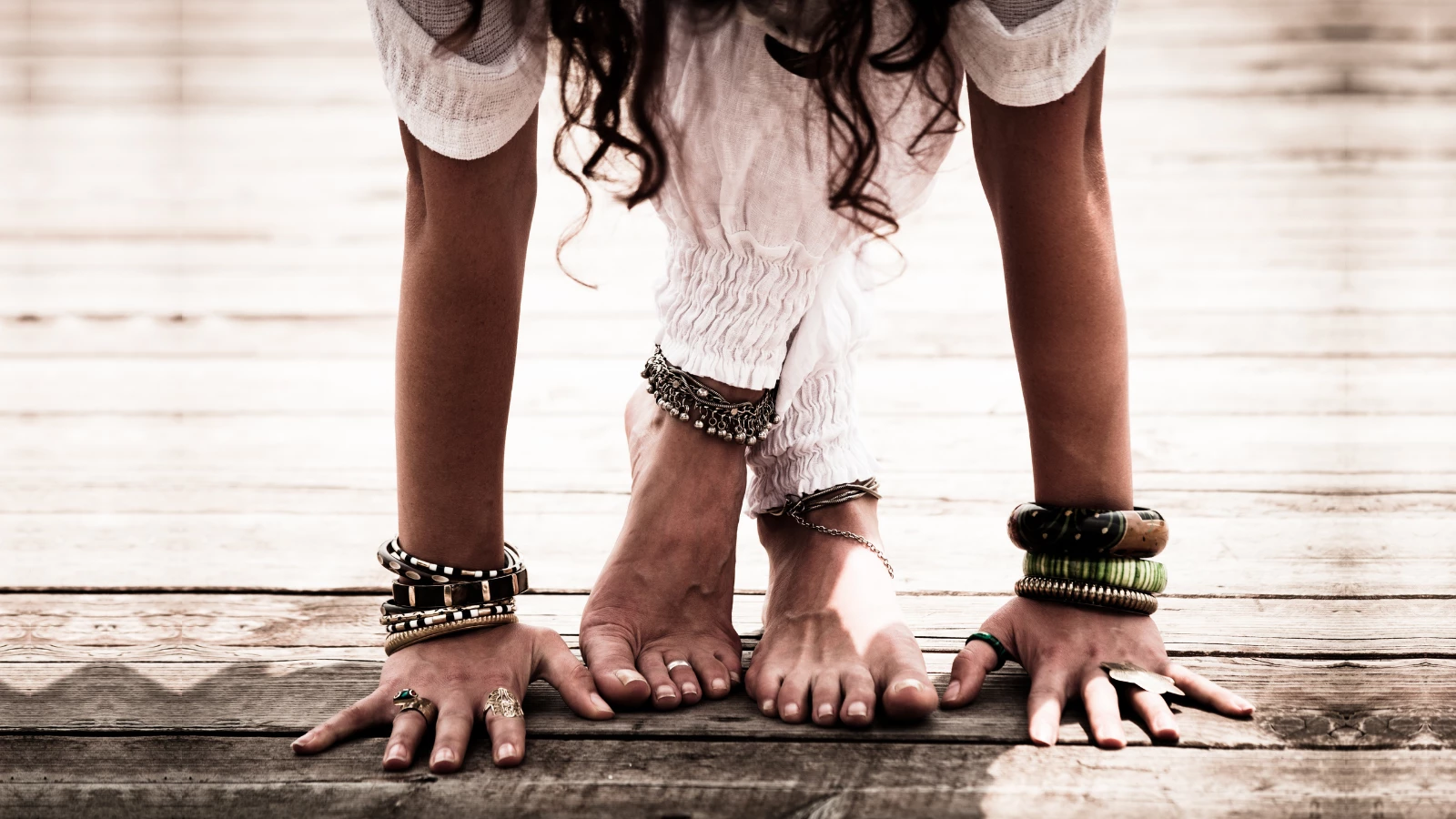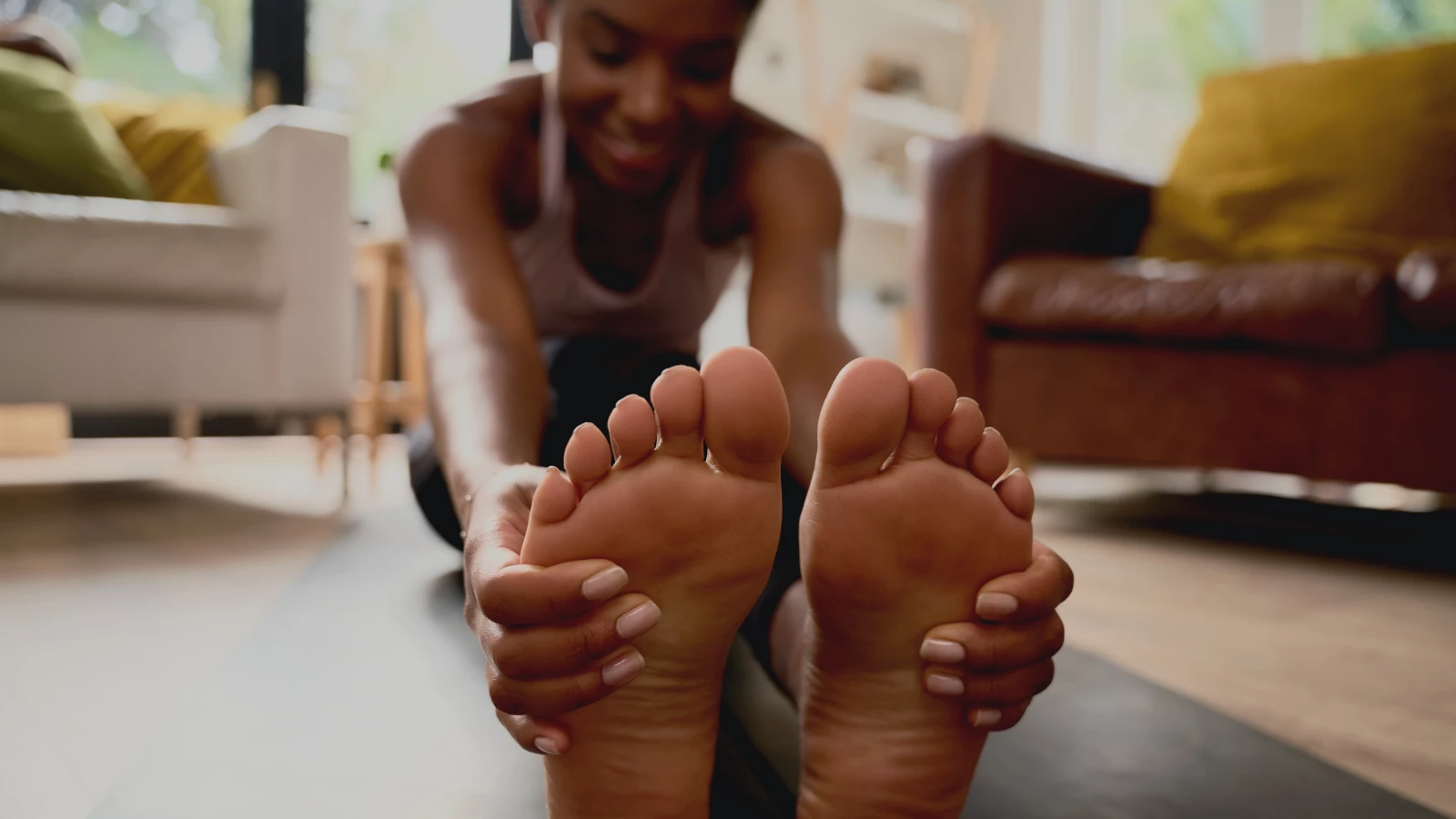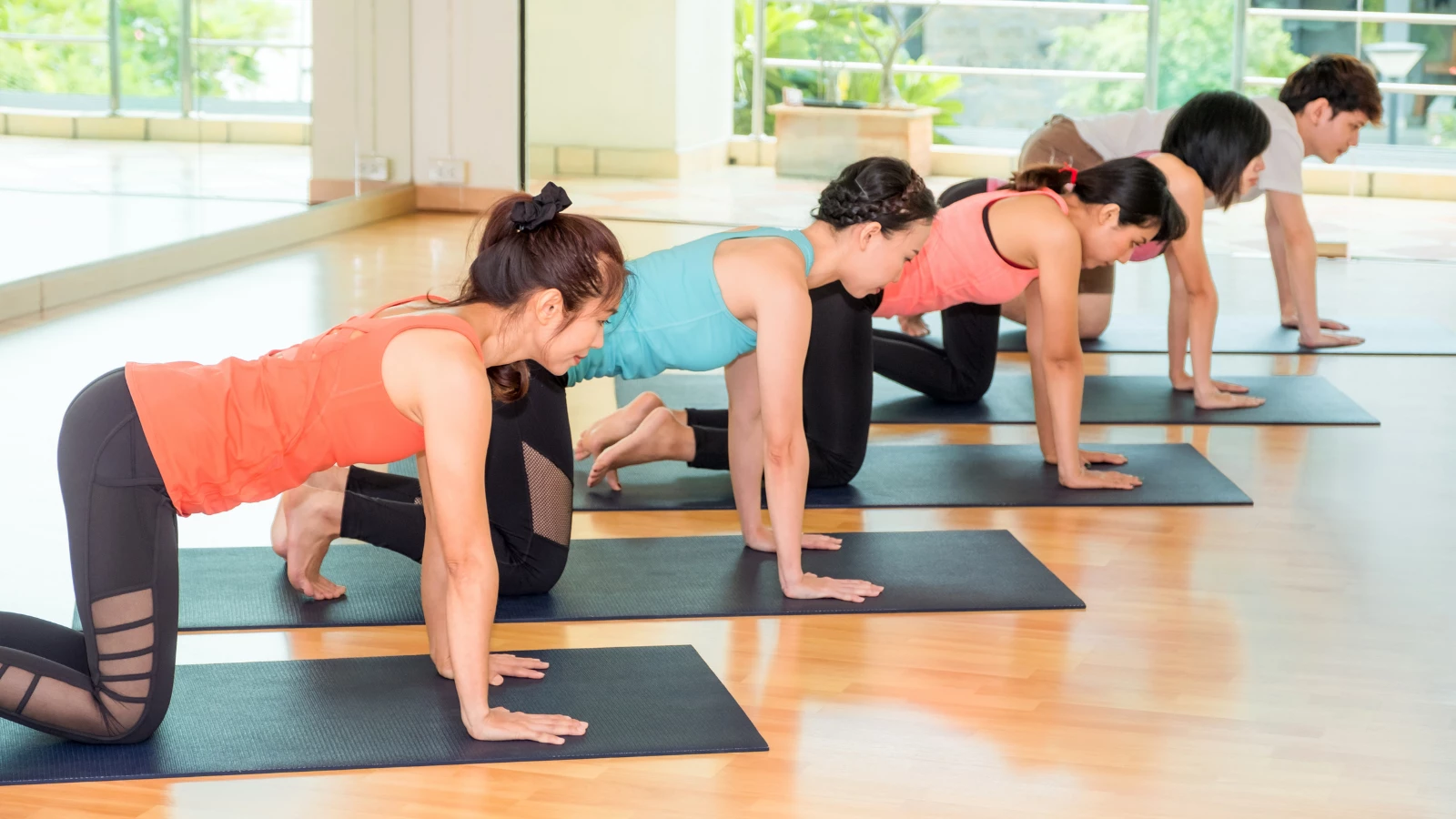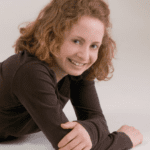Turn “Ow” to “Aaaah”: Yoga to Help Ease the Discomfort of Plantar Fasciitis

Article At A Glance
Our feet carry us through our asana practice and through our daily life. The human foot is an astoundingly functional, adaptive mechanism. With 52 bones and 33 joints, our complicated feet are the fruit of millennia of evolution. Yet some stresses of modern life—insufficiently supportive footwear and long days on our feet, for instance—are beyond the feet’s abilities to function and adapt.
Our feet let us know this through pain. A common response to foot stress is plantar fasciitis. The “plantar” region is the midarch of the foot (the two other arches being inner and outer). “Fascia” is connective tissue, and “itis” refers to inflammation. Taken together, this means inflammation in the tissue of the mid-arch of the foot.
What Causes Plantar Fasciitis?

Other symptoms that show up with the condition, which are also characteristic of the body’s inflammatory response, include redness and warmth to the touch. Most problematic is the pain, particularly for people—such as cashiers, servers, cleaning professionals, childcare professionals, and dog walkers—who spend long workdays on their feet. This pain is most often at the arches, but other areas in the feet, such as the heels, can also become painful.
The altered distribution of work and weight (“load”) when midfoot arches are compromised can lead to muscles in other areas of the feet becoming tense, strained, and painful. Plantar fasciitis (PF) can also contribute to pain in other lower-body areas, such as the hips or knees (also problematic for active yogis).
This pain is often our feet signaling to us that we’re overworking them. Fashionable, but not functional, footwear such as stilettos and other kinds of heels, can also be a culprit. Because of the tendency to pronate (or let the feet’s inner arches fall inward), those with low inner arches—most often the result of our feet’s inalterable bone structure—are also prone to plantar fasciitis. Key to easing plantar fasciitis symptoms in those situations are supportive footwear (with rigid, strong arches and/or inserts) and learning to lift the arches as much as possible.
How Yoga Can Help Plantar Fasciitis
Yoga can help. Think back to Tadasana (Mountain Pose) fundamentals, including lifting the inner arches of the feet while grounding into the mounds of the big toes. Ideally, we practice these Tadasana principles in every standing pose. Thus, all yogic standing poses can be great practice for continuously lifting the arches. They can also strengthen our arches so that we can feasibly do so!
Because overworked feet are often prone to plantar fasciitis, the following poses are non-weight-bearing for the feet. Mindful asana practice can also help, should the pain in your feet not be sharp, localized, and anything above barely noticeable when practicing standing poses (a signal to stop doing them). The yogic practice also attunes us to the importance of listening to our bodies and giving them what they need to feel their best. So rest your tootsies, opt for functional footwear as much as possible, and enjoy these yoga poses for achy feet!
A Yoga Sequence for Aching Feet
Keep a firm blanket close by, as it may be a helpful tool for practicing this sequence.
Bharmanasana (Tabletop Pose) with Toes Tucked

This pose allows for modified stretching of the mid-arches and other areas of the feet to get that “sweet spot” of stretch, short of pain.
- On hands and knees, with your middle fingers pointing straight forward, set your shoulders up directly over your wrists and your hips directly over your knees. If you’re experiencing discomfort in your knees, place a blanket under them.
- Ensure that two things are happening concurrently: your biceps are spinning forward, and your hands are pressing evenly into your mat. If that’s physically impossible to do (likely to do with your bone structure, which nothing can change), move your wrists ever so slightly farther away from each other and let your fingers spin slightly sideways.
- Gaze both forward and down (on a diagonal of sorts) so that both the back and front of your neck are as long as possible. Feel your belly scoop upward into your spine to firm your core, particularly if you have a rather flexible back and tend to overarch the spine in this pose.
- Turn your toes under and dig them into your mat. If that is painful for your feet, skip this part and do a Marjaryasana/Bitilasana (Cat/Cow Pose) sequence instead. Otherwise, shift just a slight bit forward and backward, breathing into the stretch and sensation you likely feel in your feet.
- Keep that going for 5 to 10 breaths, or less, if the sensation here is too intense, and definitely less if this action becomes painful. Do a Cat/Cow sequence as well if your body is calling for that.
Adho Mukha Svanasana (Downward-Facing Dog Pose)

This pose stretches the whole body, including the feet and the muscles around the hips and knees, which can become tight and painful with plantar fasciitis.
- From Tabletop Pose with your toes turned under, walk your hands just a few inches forward. Then ground into both your hands and the balls of your feet. From there, lift your pelvis and straighten your arms and legs so that your body is in an inverted “V” position with the sit bones at the apex of the pose.
- Maintain all of the actions in your hands and arms that you practiced in Tabletop Pose. Feel your thighs draw backward, your forearms lift, and, as you also did in Tabletop Pose, scoop your belly in toward your spine, especially if you’re rather flexible in your upper back. Feel your inner arches lift, and note how that action feels.
- Hold the pose for 3 to 5 breaths.
- For a bit of extra movement and stretch that very might feel good if your foot arches are tense and tight, pedal your feet (sometimes called “walking your dog”), allowing one heel to lift while the other pushes down into your mat, and then alternating back and forth. Make sure your knees point straight forward during this movement, as they sometimes tend to cave inward. Finish your heel pedaling when it feels right to you to finish and move on.
Ananda Balasana (Happy Baby Pose) with Full Foot Massage

This pose allows for targeted stretching of the inner legs and middle arches, with an opportunity for a foot massage.
- From Downward Facing Dog Pose, bend your knees and land them back on your mat or whatever surface you’re on. Roll onto your back in whatever way works best for you so that you’re belly up. Take a moment to breathe and reset here, if that feels best for you. Feel your back soften and release into the support under it.
- Bend your knees again and bring them toward your armpits. Hold the outsides of your feet. If this feels like too much sensation or is simply physically inaccessible, let your knees go very wide, and your feet come closer together, creating a diamond shape. Try to keep your backside softened into the floor.
- So long as you feel stable here, massage your feet. Create circles with your thumbs, applying gentle but notable pressure. Go from your heels to your arches to your toes. Do this for as long as feels good for you.
Also, read...
Teaching Svadhyaya: 3 Ways to Encourage Self-Study in Yoga
In Celebration of Gray-Haired Yoga – Busting the Myth of the Yoga Body
Related courses

Kathryn Boland is an RCYT and R-DMT (Registered Dance/Movement Therapist). She is originally from Rhode Island, attended The George Washington University (Washington, DC) for an undergraduate degree in Dance (where she first encountered yoga), and Lesley University for an MA in Clinical Mental Health Counseling, Expressive Therapies: Dance/Movement Therapy. She has taught yoga to diverse populations in varied locations. As a dancer, she has always loved to keep moving and flowing in practicing more active Vinyasa-style forms. Her interests have recently evolved to include Yin and therapeutic yoga, and aligning those forms with Laban Movement Analysis to serve the needs of various groups (such as Alzheimer’s Disease patients, children diagnosed with ADHD, PTSD-afflicted veterans – all of which are demographically expanding). She believes in finding the opportunity within every adversity, and doing all that she can to help others live with a bit more breath and flow!



